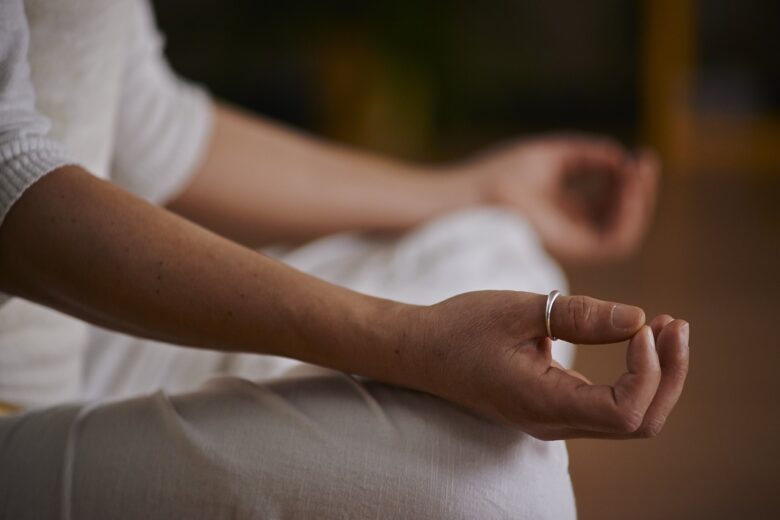Overthinking is when you dwell on or worry about the same thought repeatedly. People who overthink can be paralyzed by their worries and may struggle to make decisions or take action. Overthinking can be caused by — and can contribute to — depression, anxiety, and other mental health disorders.
Thinking about all the things you could have done differently, second-guessing every decision you make, and imagining all the worst-case scenarios in life can be exhausting. But, overthinking is a hard habit to break.
You might even convince yourself that thinking about something for a really long time is the key to developing the best solution, but that’s usually not the case. In fact, the longer you think about something, the less time and energy you might have to take productive action.





Overthinking
Overthinking is different from problem-solving. It is about dwelling on the problem, while problem-solving involves looking for a solution. Overthinking sometimes involves beating yourself up for the decisions you already made. And while a little healthy self-reflection can help you learn from your mistakes, rehashing and second-guessing is a form of mental torture.
When you’re overthinking you might feel like your brain won’t shut off making it difficult to fall asleep, or stay asleep. You may dwell on a thought throughout the day, finding it taking hold of you even when you’re trying to focus on something else.
When you approach life from a place of balance and stability our ability to process information and problem solve is increased. You are able to clearly see which areas of life are in need of attention, and direct your complete focus to the task at hand. Once you’re able to step back from a situation it may seem as though problems begin to resolve themselves!
It may seem counterintuitive to take time out of a busy day to practice yoga. You may think “How can I spend 1 hour or more practicing yoga when there are so many other things to do?”. But those who dedicate their time to these ancient practices will find greater clarity of mind and more mental ability to focus on that which is necessary.
Oftentimes overthinking and the mental strain it creates are in service of a thought which is unnecessary. You may fret and worry about something which is ultimately not in your control. In fact much of overthinking is in reaction to that which is out of our immediate control, or even something that has already happened.
So, how can yoga help? Yoga works towards creating balance and clarity in the body and mind.
Stability, or the state of being stable, equates to being sane and sensible; not easily upset or disturbed. The word stable originates in Middle English: from Anglo-Norman French, from Latin stabilis, from the base of stare ‘to stand’.
Asana for Overthinking
There are many beneficial asanas (poses) which can foster a sense of stability in the physical body. Take samasthiti (equal standing) a command to attention, to stand in balanced stillness. It is the practice of standing with equal, steady, and still attention. Or savasana (corpse pose) often placed at the end of a practice, this pose allows time for the body and mind to calm down, process and integrate new information.
To remain stable, physically and mentally, requires strength. These asanas focus on building core awareness and total body strength:
- Trikonasana (Triangle pose)
- Phalakasana (Plank pose)
- Navasana (boat Pose)
- Utkatasana (Chair Pose)
To filter through thoughts and determine which are necessary requires balance and focus. These asanas work on building balance and cultivating focus:
- Vrksaasana (Tree Pose)
- Virbhadra asana I, II, III (Warrior 1, 2, 3)
- Parivrtta Trikonasana (Revolved Triangle)
- Garudasana (Eagle Pose)
But yoga is so much more than asanas. A well rounded practice will also include yamas (self restraint), niyamas (guideline for self), pranayama (breath control), pratyahara (control of the senses), in pursuit of the higher stages of meditation: dharna, dhyana, and samadhi.
The fourth yama brahmacharya, often translated to “celibacy”, can also be viewed as “right use of energy”. In our physical practice this might present as bringing a sense of ease to poses and the transitions between each pose. Mentally this can show up off the mat in redirecting energy away from unnecessary thoughts, or overthinking.
The second niyama santosha, or contentment, is in action when you accept yourself as you are each time you step to the mat for a practice. And continue to practice without expectation for some grand achievement, only remaining content with whatever is received from each practice. Off the mat this could be accepting an interaction as it is, without dwelling on what might have been. Releasing the mind from overthinking on something that is out of your control.
Through Pranayama

There are many techniques in pranayama to create strength, balance, and stability in the body and mind. An easy one that anyone can try is nadi shodhan (Alternate Nostril Breathing)
- Sit comfortably.
- Breathe out completely.
- Close the right nostril, inhale through the left.
- Close the left nostril, exhale through the right.
- Inhale through the right, close the right, exhale through the left.
- Continue this way, alternating the breath between the nostrils, ending with an exhale through the left nostril.
It is believed to cleanse the nadis or energy channels in the body through two main nadis: ida and pingala, represented by the left and right nostril, respectively. Cleansing these channels allows energy to flow equally, bringing a sense of balance and stability.
Pratyahara can be practiced by regulating what is being let in through the 5 senses – sight, sound, smell, taste, touch. Through self awareness and reflection you can determine when the senses are being overwhelmed and use that information to redirect your attention when necessary. In a yoga class this might be resisting the urge to move during savasana. In life you may choose to delay your response to a message which triggers your anxiety.
You can see how a complete yoga practice works to restore the body and mind to a state of equilibrium. Bringing this balance to your life can help ease the sense of overwhelm which exists, especially in the modern world. From this state of being you can easily manage thoughts that arise throughout the day and approach life from a more calm and receptive place.




